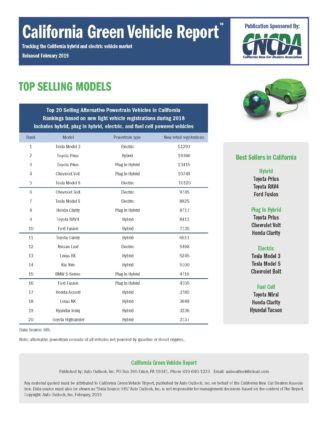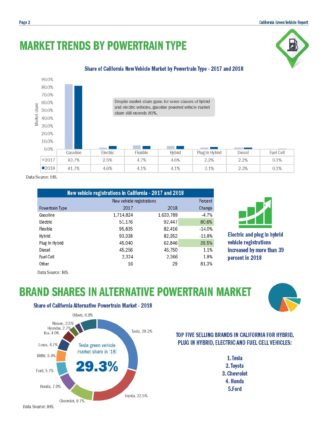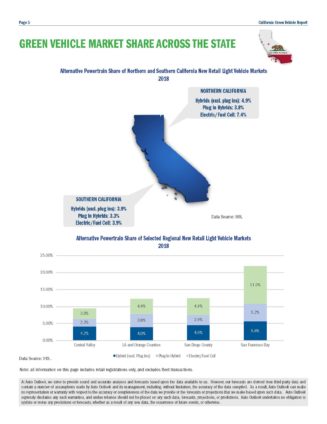According to a report issued by the California New Car Dealers Association (CNCDA), Tesla was the number one selling alternative powertrain brand in 2018, representing 29.3% of the total market share. That number includes hybrids, plug-in hybrids, and fuel cell vehicles. When the numbers are limited to battery electric-only vehicle sales, the Model 3 then claims 55% of sales – 51,300 of the total 92,447 sold in 2018. Impressively, the Model 3 sales numbers alone represent more cars sold than the entirety of EV sales in California for 2017 which represents part of an overall increase of about 81% of total EVs sold. CNCDA’s report is good news for the green vehicle industry as a whole and numerically demonstrates Tesla’s leadership in the arena.
Second place for alternative powertrain vehicles in California went to Toyota for the Prius hybrid at 19,366 cars sold; 13,415 for the Prius plug-in hybrid. Chevy’s Volt plug-in hybrid came in 4th at 10,749, and Tesla’s Model S sold 10,120, capping the top 5 vehicle sales with Tesla bookends. Notably, hybrid vehicle sales went down about 20% while plug-in hybrids increased by nearly 40%. Total hybrid sales dropped about half a percent. From these numbers, it certainly seems the consumer market is pointing in the Tesla-type rechargeable direction.
Although the nearly-doubled increase in EV sales from 2017-2018 in California is significant, ICE vehicles still made up around 82% of all California vehicles sold in 2018. Several reasons could factor in the continued consumer preference for gasoline-powered purchases. “California has a long way to go to overcome challenges, support the needs of zero-emission vehicles, and get consumer buy-in for this advanced technology. Factors like charging infrastructure, convenience, range and affordability all come into play when consumers purchase a vehicle,” Chairperson Ted Nicholas said in a statement released by CNCDA with their report. Tesla’s business model obviously has factored in all of these considerations with its Supercharger network, over-the-air updates, owner app offerings, and now, its $35k Standard Range Model 3.
California has set a goal of putting 5 million EVs on its roads by 2030 due to 40% of the state’s greenhouse emissions coming from its transportation industry. Supporting the increase in zero-emission vehicle sales is an obvious part of that goal, meaning that while Tesla’s sales are impressive and market-changing, the state still has a long way to go. “While we continue to see progress on this front, the pace of change is relatively slow, especially in regions of the state that are outside of the San Francisco Bay Area,” Nichols further commented in the report’s release. With new EV offerings coming from a variety of manufacturers over the next two years, including the Model Y and Tesla pickup truck, perhaps the market will speak for the merits and desirability of EVs for itself.




